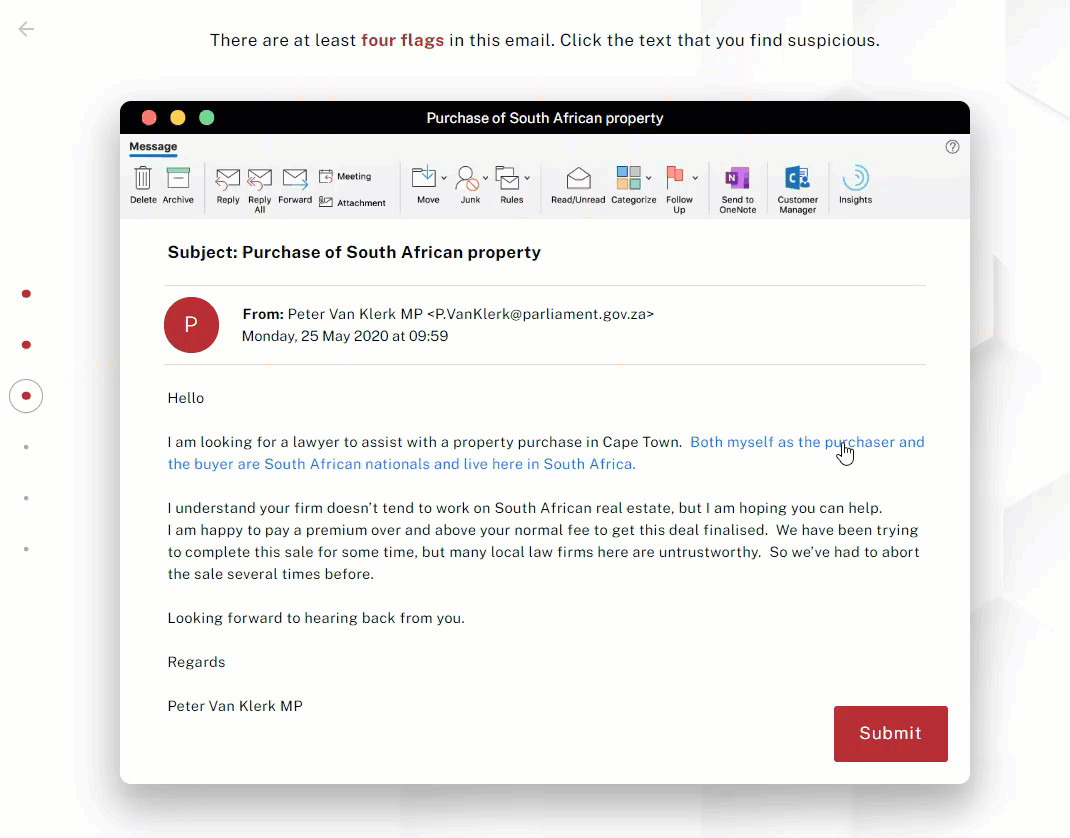What does the term anti-money laundering mean?
‘Anti-Money Laundering’ or ‘AML’ could refer to any law, regulation or procedure designed to respond to the threat of money laundering.
A typical money laundering scheme involves placing ‘dirty’ money into the financial system (placement), moving it around the system to hide its source (layering), and returning the ‘cleaned’ money to the criminal’s pockets (integration).
Criminals launder money in order to mask the proceeds of crime, so that they appear to have originated from a legitimate source.
The AML laws and processes which are relevant to you will depend on the jurisdiction in which you are based, the organisation you work for, and the industries in which you or your clients operate.
AML in the UK
The principal money laundering offences in the UK are contained in the Proceeds of Crime Act 2002 (POCA), together with a number of money laundering regulations which implement the EU’s Money Laundering Directives. Following its departure from the EU, the UK has continued to update these regulations, showing that it intends to remain at the forefront of the global fight against money laundering.
The main offences in the POCA include concealing or disguising criminal property, as well as removing criminal property from the jurisdiction. The POCA also prohibits acquiring, using or possessing criminal property, as well as entering into – or becoming concerned in – financial arrangements which you know or suspect involve criminal property. Whilst an arrangement which conceals or transfers terrorist property could be an offence under the POCA, this is also explicitly proscribed by the Terrorism Act 2000.
AML in the regulated sector
People operating in the “regulated sector” – such as those working in law firms – will need to be aware of additional rules under the POCA, such as the “failure to report” offence. This applies to someone who, in the course of business, knows or suspects (or has reasonable grounds for knowing or suspecting) that another person is engaged in money laundering. Subject to certain conditions, if that person fails to disclose their knowledge or suspicion (either to a nominated officer or to the National Crime Agency) as soon as possible, they will have committed an offence.
Those in the regulated sector should also be careful not to reveal that there is an ongoing investigation into money laundering, as this constitutes “tipping off”, and is prohibited under the POCA.
What is Customer Due Diligence (CDD)?
The UK has enacted certain Money Laundering Regulations (MLRs) implementing the EU’s Money Laundering Directives, such as the MLRs 2017. The MLRs apply to certain individuals and organisations (“relevant persons”), such as legal professionals, estate agents and financial institutions. The list of relevant persons was expanded by the MLRs 2019, and now includes crypto-asset exchange providers and art market participants.
Those governed by the MLRs must conduct customer due diligence (CDD) before commencing work on a new matter. The situations requiring CDD will depend on the circumstances and are set out in full in the MLRs. But it is important to note that this is not just something to consider when a business relationship is first established. CDD is required:
- Whenever you suspect money laundering
- If you doubt the veracity of information previously provided to you
- If you are aware that your client’s circumstances have changed
CDD usually involves:
- Assessing the nature of the business relationship
- Understanding your client’s circumstances and financial position, and considering whether the services you offer are consistent with those circumstances
- Obtaining CDD documents (see below)
What should be included in CDD documents?
CDD documents are the evidence verifying your client’s identity. For individuals, an identity document (such as a passport or driving license), together with a proof of address (such as a utility bill) will suffice. But for organisations, the process is more extensive and requires:
- Finding out the name and registered number of the company (or similar entity)
- Obtaining its registered office address
- Taking steps to understand the ownership structure of the entity (whether it is a company, trust, partnership, etc.). This includes identifying the beneficial owner of the company and verifying their identity.
Enhanced CDD: Politically Exposed Persons (PEPs)
Your organisation should ensure that it is equipped to deal with situations which require enhanced CDD. For example, you will need to be able to determine whether a customer (or the beneficial owner of a customer) is a PEP. A PEP is a politically exposed person, and could be a head of state, member of parliament, or the director of an international organisation.
If your customer is a PEP (or a family member or known close associate of a PEP) your organisation should have systems and procedures in place which enable it to undertake the requisite CDD for that situation. That includes (but is not limited to) obtaining approval from senior management before any business relationship is established with that customer.
The full scope of what the CDD process entails in every scenario is set out in the MLRs. But the key takeaway is that CDD is not a ‘tick box’ exercise to be undertaken when onboarding a new client. It is an ongoing process. Organisations must establish and maintain policies and procedures to mitigate the risk of money laundering. They should also ensure that their employees receive regular training, so that they too are aware of the AML rules which apply to them.
Anti-money laundering training

Regular training and refresher courses on the subject are crucial to help ensure that staff have the knowledge to avoid becoming ensnared in money laundering. VinciWorks’ anti-money laundering training is interactive and customisable for any business or user anywhere in the world. Our courses bring relevance to the heart of training with realistic scenarios, real-life case studies and more customisation options than you could imagine. The training suite includes everything from in-depth induction training to refresher courses and five-minute knowledge checks.
Our latest AML courses bring a fresh, bold, new design and begin with a course builder to deliver the most relevant training to each user. Whichever industry, jurisdiction or job role you work in, a course can instantly be built just for your staff.













